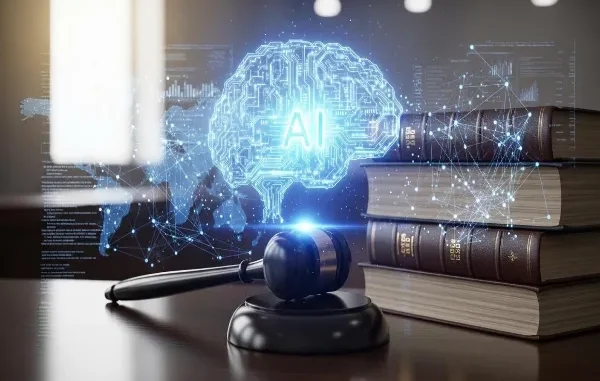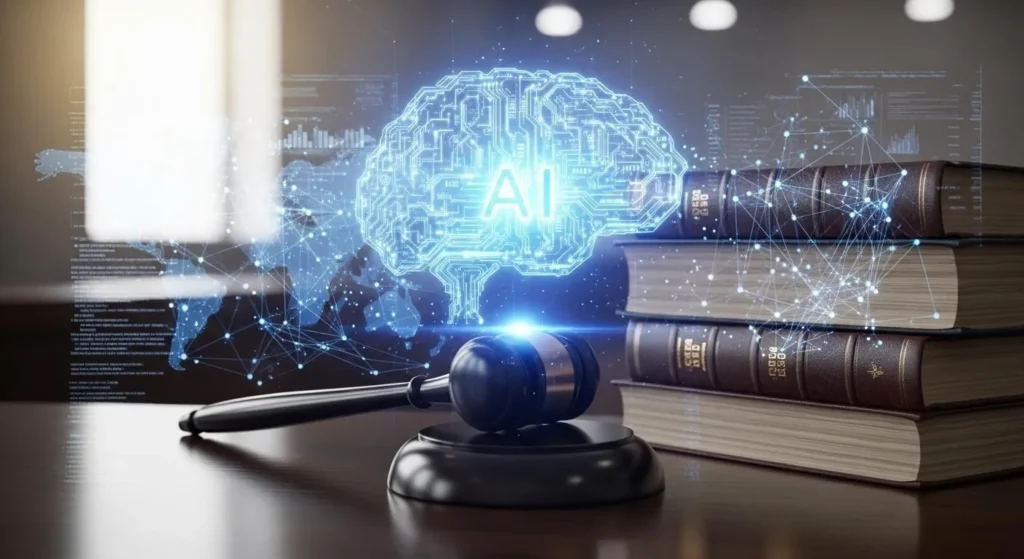

In today’s fast-changing regulatory landscape, compliance has become one of the most demanding responsibilities for modern businesses. Organizations operate in an environment where regulations are constantly updated, new laws emerge with increasing frequency, and authorities expect a higher degree of transparency and accountability. Traditional compliance methods that rely heavily on manual checks, spreadsheets, and long review cycles are no longer enough to keep pace. This is where the rise of artificial intelligence is transforming the compliance function into a smarter, faster, and more reliable system. The integration of AI for legal compliance management is becoming a necessity rather than an option, especially for companies that want to manage risk proactively and maintain a strong reputation.
The use of advanced technology in regulatory oversight is not new, but artificial intelligence brings an unprecedented level of precision and scalability. Legal teams and compliance officers now rely on AI legal solutions to identify risks, streamline monitoring, improve reporting accuracy, and support decision-making. In many industries, such as finance, healthcare, manufacturing, and technology, regulations can be incredibly complex and sometimes overwhelming. AI for legal compliance management provides organizations with the tools to automate repetitive processes, interpret legal text, detect anomalies, and predict potential violations long before they become costly issues.
The Changing Landscape of Compliance
Compliance used to be viewed mainly as a backend requirement that involved record-keeping and ensuring that the company met minimum regulatory standards. Today, compliance has turned into a strategic business function. Government agencies are investing in their own AI-based systems to detect fraud and monitor corporate behavior. Global regulatory bodies expect organizations to maintain a higher level of compliance maturity. Business partners and customers also expect transparency and ethical operations. In this environment, the cost of non-compliance goes beyond fines. It can damage brand trust, disrupt operations, and create long-term reputation challenges.
Organizations are therefore under pressure to adopt smarter systems that can improve their compliance readiness. This shift is one of the reasons AI for legal compliance is becoming a key part of corporate risk management strategies. AI systems can read and analyze laws, monitor compliance controls, and alert risk teams to potential gaps instantly. These capabilities allow companies to stay ahead in a world where compliance cannot be delayed or taken lightly.
Why AI is Transforming Compliance Management
Artificial intelligence offers multiple benefits that enhance the speed and accuracy of compliance processes. One of the biggest advantages is its ability to process large volumes of data faster than any human team could. A single compliance officer may take several days to review lengthy documents, but an AI legal tool can analyze thousands of pages in a few minutes. This speed creates a major shift in the efficiency of compliance operations.
AI is also capable of identifying patterns and anomalies that humans may overlook. A large organization that handles millions of transactions can easily miss subtle signs of suspicious activities. AI models can detect unusual behavior, perform continuous monitoring, and classify risks based on severity. This helps organizations intervene early and prevent violations from escalating.
Another important advantage is the automation of repetitive tasks. Compliance teams often spend hours collecting data, updating reports, reviewing contracts, and checking regulatory updates. These tasks take attention away from high-level strategic work. AI for legal compliance management automates these routine processes, reduces human error, and frees up teams to focus on strategic decision-making and analyzing complex cases.
AI for Regulatory Monitoring
One of the most time-consuming aspects of compliance is keeping up with rapidly changing regulations. Laws differ across regions, industries, and countries. A company operating in multiple markets must monitor thousands of regulatory updates regularly. AI-powered regulatory monitoring systems can scan government portals, regulatory bodies, and legal databases to detect changes in real time. They can summarize new updates and map them to the internal controls of the organization.
This allows compliance teams to adapt more quickly to new requirements. Instead of spending hours reading through complicated laws, they receive clear insights that help them adjust policies and procedures. AI legal tools ensure that no regulatory update is missed, helping organizations maintain continuous compliance.
AI in Compliance Audits
Audits are essential for identifying gaps, evaluating controls, and ensuring that the organization is operating legally and ethically. However, traditional audits are time-consuming and require reviewing massive amounts of data. AI enhances the audit process by analyzing records more accurately and predicting potential compliance failures.
AI-based audit systems can identify inconsistencies, missing information, or unusual activity in financial statements, contracts, procurement documents, and operational data. They can flag these issues to auditors, allowing them to focus on high-risk areas. This increases audit quality and reduces the chances of oversight.
AI for legal compliance management also helps create more transparent audit trails. Every action performed by an AI system can be recorded for future reference, ensuring accountability and ease of investigation when needed.
AI for Policy Management
Organizations rely on internal policies to guide employee behavior and ensure regulatory compliance. However, writing, updating, and communicating policies is a constant challenge. AI systems can assist by generating policy drafts based on regulatory requirements, analyzing inconsistencies between policies, and recommending updates. They can also track how employees interact with policies, measure compliance, and identify areas where employees might need training.
AI legal tools can also ensure that the organization’s policies align with global standards. For companies operating in multiple regions, this consistency ensures that the organization follows best practices while complying with local laws.
Risk Prediction and Prevention Using AI
One of the most powerful capabilities of AI is its ability to predict future risks. Traditional risk management relies on historical data and human judgment. While these methods are valuable, they often fail to capture hidden patterns in complex data. AI models can analyze years of operational data, employee behavior, external events, and industry trends to detect risk signals early.
For example, in financial services, AI can detect unusual transactions that may indicate fraud or money laundering. In healthcare, AI can ensure compliance with patient privacy laws by monitoring data access. In manufacturing, AI can predict safety risks by analyzing equipment behavior and compliance with safety guidelines.
AI for legal compliance management helps organizations take a proactive approach to risk mitigation. Instead of reacting to violations after they occur, companies can prevent them from happening in the first place.
Enhancing Contract Compliance
Contracts are an essential part of business operations. They define responsibilities, obligations, and legal requirements between parties. However, many organizations struggle with contract compliance due to the complexity of reviewing, tracking, and monitoring obligations.
AI legal contract systems can analyze contracts to identify key obligations, deadlines, and risks. They can monitor contract performance in real time and alert organizations when compliance obligations are not being met. This reduces legal disputes, improves vendor management, and ensures that the company adheres to every agreement it signs.
Improving Reporting Accuracy
Compliance reports are an important part of regulatory requirements. They must be accurate, timely, and comprehensive. Manual reporting often leads to delays and errors. AI automates data collection, analysis, and report generation. It ensures that the information presented to regulators is precise and consistent.
AI-based reporting tools can also generate visualizations and insights that help senior leaders make better decisions. When compliance data is organized and clearly presented, decision makers can evaluate risks more effectively and allocate resources where they matter most.
Strengthening Data Privacy Compliance
Data privacy laws such as GDPR, HIPAA, and other national regulations require strict protection of personal data. Violations can lead to heavy penalties and reputational damage. AI systems help organizations classify data, monitor access, detect unauthorized use, and ensure adherence to privacy guidelines.
AI can also help automate responses to data subject requests, manage consent, and identify gaps in privacy controls. These capabilities reduce the workload on privacy teams and improve the organization’s overall data protection strategy.
The Human and AI Collaboration in Compliance
AI is not a replacement for human compliance professionals. Instead, it is a powerful tool that enhances human judgment and makes compliance processes more effective. Human experts play a critical role in interpreting complex legal issues, making ethical decisions, and guiding AI models. AI performs the tasks that require speed, accuracy, and large-scale data processing. This partnership creates a smarter compliance ecosystem that reduces risk and enhances business performance.
Compliance teams can now spend more time on strategic work such as risk analysis, internal communication, employee training, and stakeholder engagement. With AI for legal compliance management, human professionals step into more impactful roles while AI handles operational tasks.
The Future of Compliance with AI
The future of compliance will be shaped by increasing automation, predictive analytics, and real-time monitoring. AI systems will continue to evolve and gain the ability to interpret even more complex regulations. Organizations will adopt AI-driven compliance tools not only to avoid regulatory penalties but also to strengthen internal governance and operational excellence.
AI legal technologies will become more integrated with enterprise resource planning systems, contract management platforms, and risk assessment tools. This will create a unified compliance ecosystem where data flows seamlessly across departments.
As AI becomes more advanced, compliance will shift from a reactive function to a strategic business advantage. Companies that embrace AI early will gain a competitive edge by reducing regulatory risks, improving efficiency, and building trust with stakeholders.
Conclusion
AI for legal compliance management is transforming the way organizations identify, manage, and mitigate risk. It enables faster decision-making, enhances regulatory monitoring, automates manual tasks, and provides deeper insights into potential vulnerabilities. With the power of AI, businesses can stay ahead of regulatory changes, improve audit quality, maintain strong data privacy controls, and achieve higher levels of accuracy in reporting.
As compliance becomes more complex and demanding, the integration of AI legal systems will become essential for organizations that want to maintain ethical standards, protect their reputation, and operate with confidence. The future belongs to companies that combine human expertise with the intelligence of AI to build a smarter and more resilient compliance framework.






Leave a Reply